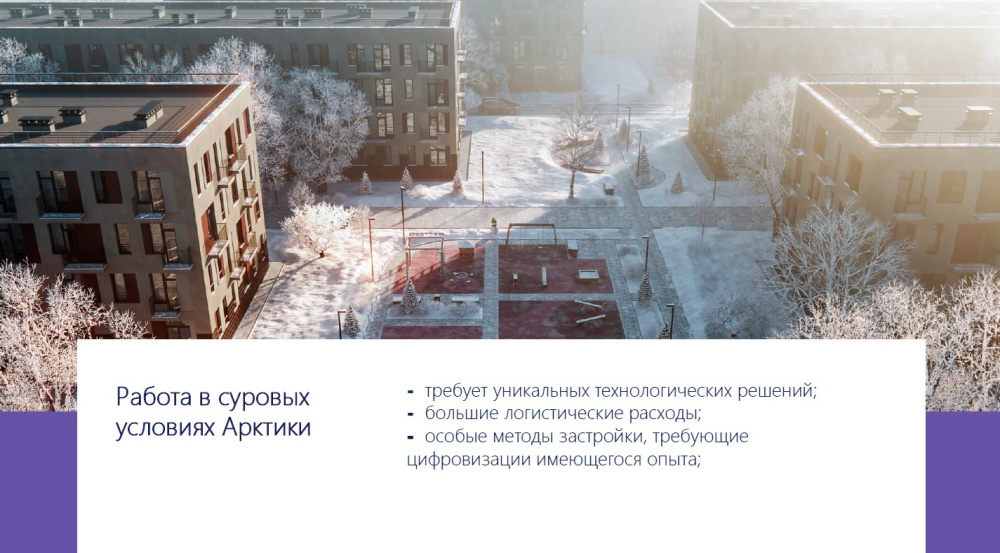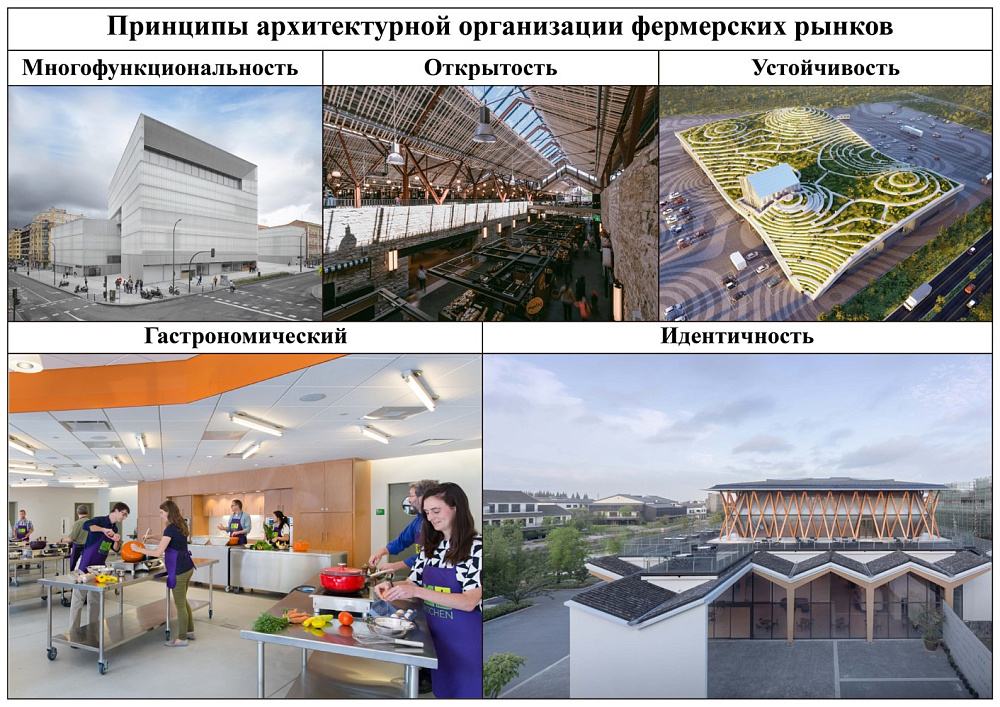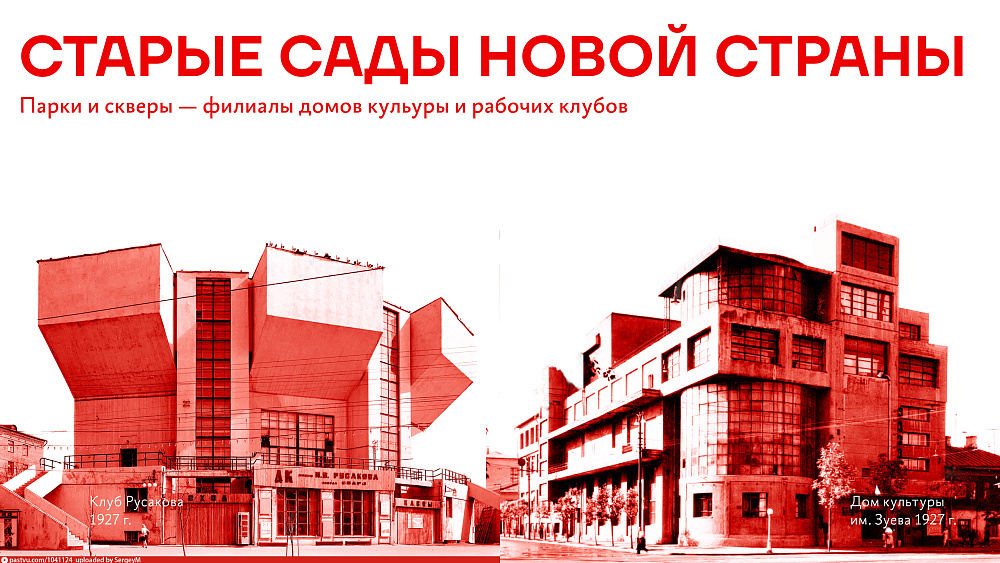 "Digitalization of design and additive construction technologies in the Arctic zone." A slide from Oleg Pchelintsev's presentation.
"Digitalization of design and additive construction technologies in the Arctic zone." A slide from Oleg Pchelintsev's presentation.
From 17 to 20 October, SPbGASU held the LXXVI Regional Scientific and Practical Conference of Students, Postgraduate Students and Young Scientists “Current Issues of Modern Construction”.
More than 1000 people became its participants. More than 30 sections were organized dedicated to various thematic areas - from architecture and urban planning to economic, legal and expert support for the activities of modern society in the conditions of informatization, digitalization and high-tech development. During the discussion, speakers and attendees discussed proposed solutions to existing problems and promising directions for the development of the construction industry.
Zhang Furui, a third-year PhD student from the People's Republic of China, made a presentation at the architectural design section on “Principles of architectural organization of modern farmers' markets.” Under the guidance of Maria Ivina, assistant professor at the Department of Architectural Design, the PhD student determined the principles of their architectural organization. Among them is the principle of multifunctionality to adapt to modern urban development and various consumer needs; the principle of sustainability, designed to improve the quality of the urban environment, create a comfortable building space and reduce its energy consumption; the principle of identity that awakens people's collective memory of social customs and traditional culture.
Valeria Gavrilova, a first-year master's student, discussed the topic of effective implementation of information modeling technologies in design organizations in the section of construction economics and housing and utility infrastructure. According to Valeria, this implementation allows to be one step ahead of competitors and use advanced solutions to improve operational efficiency. Despite the presence of a significant amount of domestic software on the market, the majority of Russian design organizations use foreign products. Under the guidance of Vadim Koshcheev, Deputy Dean of the Faculty of Economics and Management for Research, Professor at the Department of Construction Economics and Housing and Utility Infrastructure, Valeria formulated recommendations for a competent transition to domestic software and listed the advantages that such a transition will give to design organizations: reducing dependence on foreign suppliers, compliance with RF legislation requirements, improving availability and support, reducing costs, improving productivity, increasing data security.
The topic of the report by Bogdan Lobanov, a second-year bachelor’s student, was the history of engineering cultural and recreation parks in 1930–1940. Under the guidance of Svetlana Feofanova, senior lecturer at the Department of Architectural Environmental Design, Bogdan is studying the features of Soviet parks. As the student said in the architectural environment design section, for their creation they usually chose forest areas on the outskirts of the city or former estates. The size of the parks was often five to six times larger than abroad. In the 30s there were only 60 cultural and recreation parks. In the 40s there were more than a thousand. Bogdan listed their inherent problems: low accessibility, remoteness and scattered activities, difficult orientation, undeveloped territory. The student is confident that his research will help reconstruct Soviet parks, solving their planning problems and at the same time preserving their historical identity.
Oleg Pchelintsev, a second-year master's student, under the guidance of Olga Pastukh, deputy dean of the Faculty of Civil Engineering for research, associate professor at the Department of Architectural and Engineering Constructions, conducted research in the field of digitalization of design and implementation of additive construction technologies in the Arctic zone. At the section of architectural and engineering constructions, the master's student proposed using mobile and self-propelled 3D printers for construction in the Far North. Such printers can be quickly delivered to the site, installed and started printing the object. It is only necessary to develop a frost-resistant concrete mixture that can quickly set at low temperatures. An alternative option is shelter structures that provide favorable conditions at the construction site. Oleg considers the training of relevant specialists with a wide range of knowledge in the field of programming, materials science, robotics and 3D printing methods for specific tasks to be an important task.
According to Timur Ablyazov, associate professor at the Department of Construction Economics and Housing and Utility Infrastructure, secretary of the conference organizing committee, curator of the SPbGASU student scientific society, the conference is an important tool for developing scientific potential and horizontal connections between young scientists in St Petersburg. Young researchers, students and construction professionals have the opportunity to exchange projects and experiences. This contributes to the scientific and professional growth of participants, inspires new research projects and approaches.
“The conference develops young talents and creates high-quality scientific connections. Participants will learn about current trends and challenges in the construction industry and receive feedback from experienced specialists. This helps them set new goals and objectives for future scientific research. The conference also promotes convergence between the academic and professional worlds. Participants get the opportunity to see how scientific research is put into practice, and professionals have the opportunity to discover new ideas and technologies that increase efficiency and improve the quality of construction projects,” said Timur Ablyazov.





